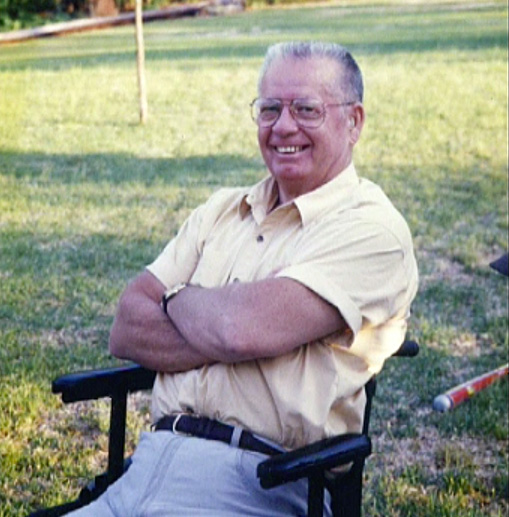I was a skinny, long-haired 16-year-old kid with acne when I made my first jump on December 11, 1975, over Pinebluff, North Carolina. My instructor was 19, and the pilot was his younger brother.
Despite the youthfulness of the staff, the drop zone used the most advanced equipment at the time. My canopy was a “high-performance” Para-Commander, not a surplus T-10, and I was trained to cut away malfunctions rather than throw out the reserve by hand. That reserve was equipped with a Sentinel MK-2000 AAD and a Steven’s Lanyard (early RSL). There was also a radio on my arm for ground-to-air canopy control.
Earlier that week, an older friend—with an astonishing 50 jumps—introduced me to the DZO, retired U.S. Army Captain Donald S. Cunningham, at his home in Pinebluff. Captain Cunningham was 45 and had used a wheelchair for the previous 20 years. For the next two afternoons, I drove the 40 miles to Pinebluff after high school for instruction with Mike Cunningham, the Captain’s older son. Late Thursday, by the runway, Captain Cunningham rolled over and told me to take a knee. We reviewed canopy control, and he told me, “Young man, I am absolutely confident you will do everything as you were trained to do.”
I don’t recall much about that first jump, except getting into the Cessna 182 (piloted by Curt Cunningham, the Captain’s younger son), standing on the step and then suddenly looking up at an oddly small parachute. Right afterwards came the Captain’s commanding voice over my radio. “Jumper, you have a good canopy. Look up and locate your control toggles. Turn 180 degrees and locate the drop zone.” I did exactly as told and landed downwind, almost dead-center in the pit. I got up, looked at Captain Cunningham and said, “When can I do that again?”
 Captain Donald Cunningham
Captain Donald CunninghamDespite my scrawny, unkempt appearance, the Cunninghams accepted me into their family of jumpers. I later learned about the Captain’s combat experiences in Korea and Vietnam. He had started skydiving at Fort Campbell in the early ‘60s, only to lose the use of his legs—earning a Silver Star and second Purple Heart—in 1964. He was active in local politics, and served as mayor of Pinebluff for 17 years. When you met the Captain, he looked you right in the eyes. He sized everyone up without prejudice, and he exuded confidence. And when I turned 18, he enrolled me in a Jumpmaster course.
Despite the handicap, Captain Cunningham was 100% in charge of the DZ. Between jumps or during weather holds, I spent hours sitting with him, talking about books, current events or his military experiences. Because of a fractured relationship with my own father, Cunningham became a surrogate, and talking to him on weekends was as important as jumping. He was the positive male role model I lacked at home, who listened and was rarely judgmental. He trusted me and treated me like an adult. In part because of my talks with Captain Cunningham, I majored in history in college. Later, he encouraged me to go to graduate school, and I did.
After graduate school, I thought back to the joy Cunningham had expressed about serving as an Army officer. Not once did the Captain ever express the slightest regret about never walking again. And not long after, I quit my civilian job and joined the U.S. Army—something I never would have considered in a million years as a teenager. On active duty, I jumped at Skydive Orange in Virginia; in Barnwell, South Carolina; and at Camp Casey in Korea.
In 1989, after five years as a “Dirty Nasty Stinking Leg” (a non-airborne-qualified soldier), I got the chance to attend Army Airborne School at Fort Benning, Georgia. As an experienced skydiver, jump school was interesting, despite the miserable August heat. There was a “tower jump” from 250 feet and five static-line jumps during the final week. On the fifth one, I made a (strongly discouraged) stand-up landing by flaring the rear risers.
My following assignment was to Fort Bragg, in North Carolina. At the first opportunity, I put on my uniform—including jump boots and maroon beret—to “report” to Captain Cunningham. Back at the DZ, I gave him a crisp salute and handed him my log book, to sign off on my Fort Benning jumps. Thirty years later, this is still an emotional memory for me. The Airborne skydiver standing at Captain Cunningham’s wheelchair that day was not the same screwed-up kid from 1975.
Sadly, the Captain passed away in 2008. He left a legacy of service to his country, family, community and local skydivers. I have loved jumping from “perfectly good” airplanes for almost 50 years, but it’s the amazing people you meet at the drop zone that sometimes alter the trajectory of your life. It’s usually for the better.
John Winn | C-13970
Winchester, Virginia